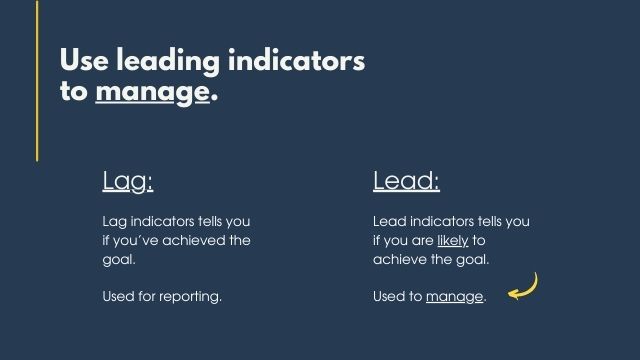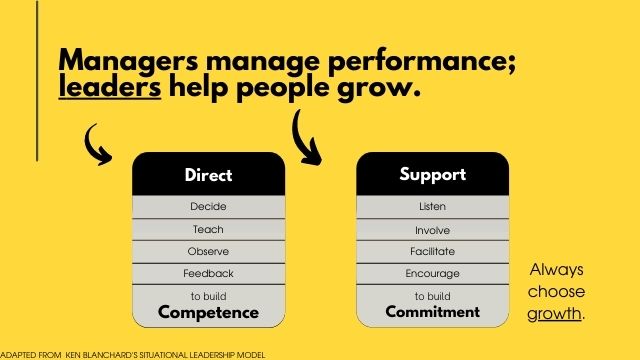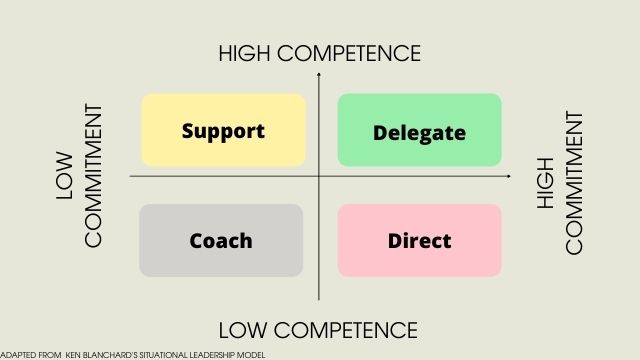We’ve learnt that early-career managers do no favours to penalise or engage in combative or abrasive managerial styles, especially in the first years of managing teams, roles or functions.
Culturally, many organisations operate in high-context culture: we prefer keeping the peace and well-being of the group rather than individual achievement.
These managers must keep the cogs moving, to translate executive vision into an executable plan, while managing conflicting expectations and front-line operations.
How might a “nice” manager survive an underperforming team while carving a meaningful role and build a career?
As we enter another performance review season, it’s timely to share how even “nice” managers can be effective, lead teams to success, and even help underperformers excel.
In a discussion in the programme Discipline of Execution, we realised that while scoreboards are essential, managers had questions about managing and helping underperformers excel.

#1: As a manager, keeping a scoreboard is always good. Don’t beat yourself up for being a “nice” manager.
Organisations in high-context cultures are skilled in nuance, in reading between the lines, in the unspoken, in being inoffensive.
Many participants we met are “nice” managers: less likely to punish, humiliate, or create friction in teams publicly.
There’s no shame in being a “nice” manager, but remember that your job, too, is on the line.
A manager cannot assume, sugarcoat or beat around the bush when giving feedback to underperformers. Consider providing feedback in person instead of in a group setting.
Exceptional teams thrive on transparency and integrity, and access to data is empowering and cultivates accountability.
If the team drew up this scoreboard to review, recognise and reward high performers, don’t let this damage team dynamics.
Recognise that performance indicators reflect the work of the team, not the failure or success of an individual.
While you can praise, acknowledge or reward performers, make sure that their learnings are shared so that everyone benefits from their wins.

#2: Measure meaningful performance
Make sure that you measure performance in a meaningful way. Be clear about goals, use appropriate leading or lagging indicators.
Broadly: Lagging indicators are great for reporting; managers should use leading indicators to manage performance.
These may vary across industries. For sales teams, revenue is a lagging indicator used to report performance, while the number of outreach contacts is lading indicators is used to predict future success.
A more common example: If you aim to lose weight, a lagging indicator is the number of kgs lost. A leading indicator is how much exercise you put in, calories burnt, or sleep hours that indicate your journey towards weight loss.
Some questions that came up in our discussion:
- Would a public scoreboard motivate top performers; what happens if underperformers become demotivated?
- Should managers make scoreboards private instead?
- How would that affect team dynamics or your performance?
- What does it say about you as a leader?

#3: Don’t be held hostage by underperformers; don’t give them an easy way out.
Make sure your feedback is constructive:
- Schedule a feedback session that is intentional, set the agenda. It shouldn’t be “a quick sync”.
- Establish expected outcomes and action plans.
- Listen.
- Focus on addressing the problem, not the person.
- Evaluate if the individual lacks competence or confidence.
- Consider how to move the underperformer up the change curve:
- Are these individuals aware of how their work connects to the big picture?
- Do they have a clear direction, resources, processes?
- Do you need to give more direction, or more support?
- Praise improvements, not just results.

#4: To be a leader, help them grow. Invest in helping underperformers excel.
While your role is to manage people, teams or performance, you should consider stepping up to play the role of a leader – to develop people. Your work doesn’t just end at giving feedback.
An effective manager might assign an action plan to an underperformer through the feedback process or establish more check-ins.
While you may have the best of intentions, without empathy, this might result in a lack of trust and puts the individual on a defensive. (See 3 tips on building trust)
A leader, however, will be the first to act with empathy and understanding. This leader will explicitly offer to coach, mentor or train, and invest time and resources to help underperformers excel.
Consider situational leadership: if you need to employ encouragement, coaching, training, or give more challenges.
Remember: a manager manages people and tasks; a leader builds people. Help underperformers excel.
Learn how Strategy is Execution: the best teams spend 54% more time planning; under-performers spend 83% more time fire-fighting.
